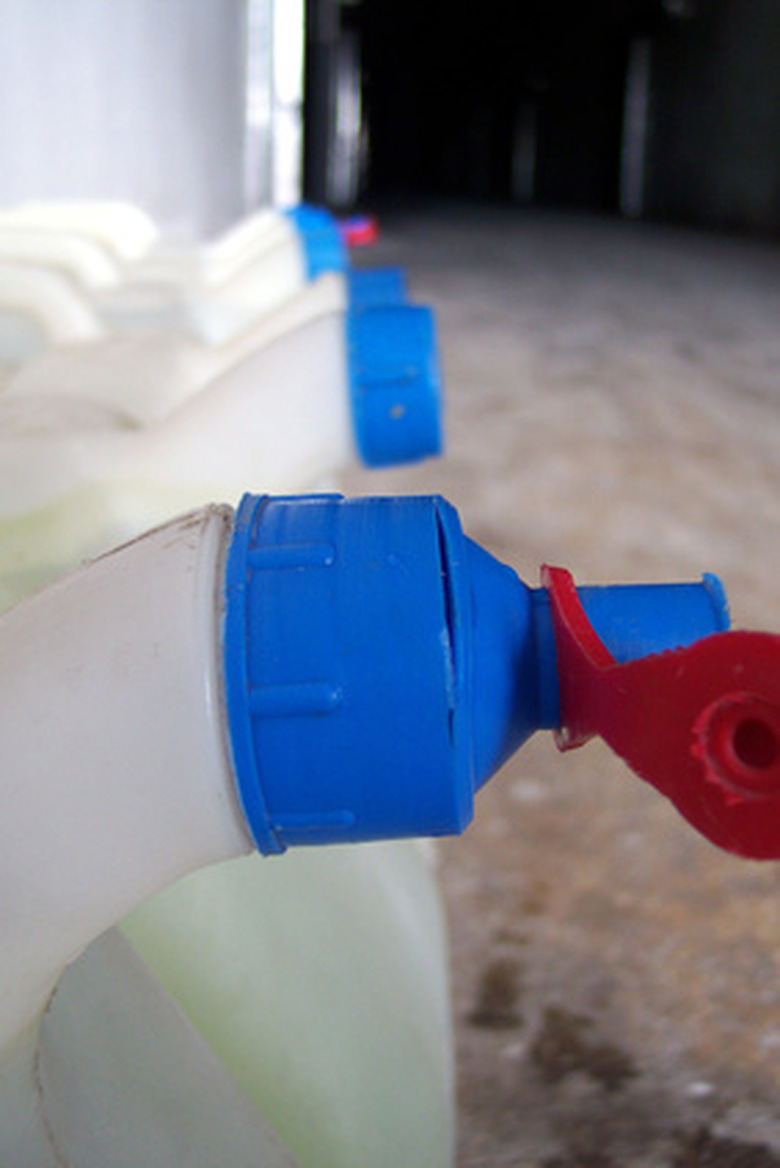Optical Properties Of Polyethylene
Polyethylene is a commercial plastic that has found its way into almost every conceivable application. More than 100 billion lbs. of polyethylene were produced in 2000, formed into everything from bags, bins, bottles and other commodities to specialty items like prosthetic hip sockets. In some cases, the optical properties of polyethylene are important from an aesthetic standpoint: Glossy packaging is more attractive than dull. In other cases, the interest is practical, as in being able to see the liquid level inside a bottle. In all cases, the optical properties of a polyethylene sample depend on its molecular structure.
Types
Types
There are two basic types of polyethylene, and knowing the difference between them is crucial to understanding their optical properties. High-density polyethylene (HDPE) is uniform at the molecular level, which enables the molecules to pack tightly and form crystalline patches. Low-density polyethylene (LDPE) is less uniform and tends not to have ordered internal structure. Polyethylene can also be categorized by molecular weight, or the average length of its polymer chains. These factors play key roles in determining the major optical properties of polyethylene: haze, transparency and gloss.
Haze
Haze
Haze is exactly what it sounds like: a measure of how cloudy a sample appears. More precisely, haze is a measure of the amount of light that is deflected per distance traveled through a sample. Here the distinction between HDPE and LDPE is important. HDPE's crystalline patches deflect light like grains of sand in glass. The degree of light deflection is dependent in part on the size of the crystalline patch, so haze tends to increase with the density of the polyethylene. The fabrication method of a polyethylene sample also has a strong effect on the haze, as not only size but also orientation of the crystals influences the haze due to interaction of the light with the crystal structure. The more quickly a sample is cooled after it is shaped, the less hazy it is likely to be due to the polymer chains having less time to rearrange into crystalline structures.
Surface Haze
Surface Haze
In addition to crystallinity within the sample, surface roughness causes light deflection and therefore plays a role in the haze measurement of a polyethylene sample. In this case, the molecular weight of the polyethylene–how long the polymer chains are–plays a major role. In general, longer chains lead to more surface roughness and more surface haze. Processing conditions also factor into surface haze. A polyethylene sample that is blown into a film takes its shape like a bubble, with no mold or die impinging on the surface, and tends to be very smooth. This decreases its surface haze. Thicker samples that are molded, extruded or cast can have more or less surface haze depending on the microscopic smoothness of the surfaces with which they come in contact.
Transparency
Transparency
Put simply, transparency refers to how clear an object is. More technically, it is a measure of the amount of light that makes it through the object without being scattered or deflected by particles inside. For polyethylene, as with most materials, the thinner the sample, the better the transparency–there are just fewer chances for a particle to deflect light traveling through. Transparency is therefore related to haze: The more hazy a sample is, the less transparent. However, unlike haze, transparency is a "whole-sample" measurement, and thickness matters: Even a very low-haze polyethylene sample will not be transparent if the light has to travel far. According to "Handbook of Polyethylene," polyethylene samples more than 1/8 of an inch thick are rarely transparent.
Gloss
Gloss
Whereas haze and transparency are concerned only with whether light is deflected or passed through a sample, gloss depends on how that light is deflected. A sample that is glossy–the term means the same thing in technical and lay language–deflects light "coherently," meaning that it is all deflected in the same way. Gloss is strictly a surface phenomenon, and achieving good surface smoothness is critical for achieving high gloss. Gloss is not simply another term for surface haze, in that it strongly depends on the angle at which the sample is viewed. A hazy sample can be glossy, in which case it is said to have a "sheen." According to "Practical Guide to Polyethylene," new types of LDPE have become available since the 1990s that have enabled sturdier packaging materials with higher gloss.
Cite This Article
MLA
Niece, Krista. "Optical Properties Of Polyethylene" sciencing.com, https://www.sciencing.com/optical-properties-of-polyethylene-12342810/. 22 September 2017.
APA
Niece, Krista. (2017, September 22). Optical Properties Of Polyethylene. sciencing.com. Retrieved from https://www.sciencing.com/optical-properties-of-polyethylene-12342810/
Chicago
Niece, Krista. Optical Properties Of Polyethylene last modified March 24, 2022. https://www.sciencing.com/optical-properties-of-polyethylene-12342810/
